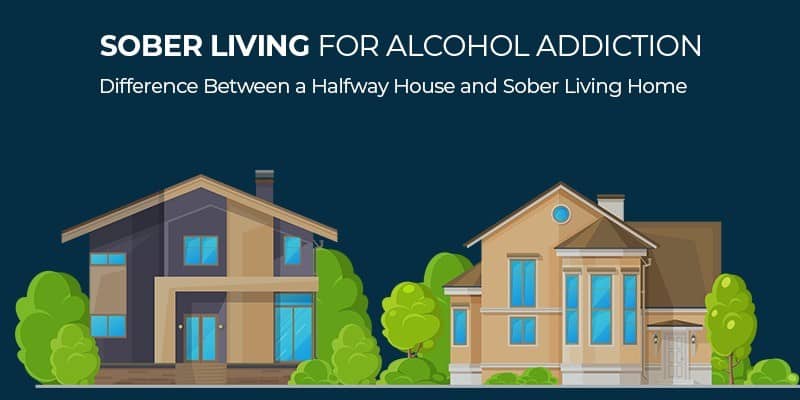Many recovering alcoholics aren’t ready to transition into everyday life after their time in our luxury rehab center. Recovering addicts may need several weeks, if not months, before they’re comfortable to lead a substance-free life. Fortunately, most standard drug and alcohol addiction treatment programs boast sober living homes that act as an intermediary step between alcohol rehab and the “real world.” Before stepping into a sober living home, individuals must undergo one of two substance abuse detox programs and receive alcohol addiction treatment.
Here at United Recovery Project, we won’t catapult you into post-rehab life until you’re comfortable. We understand that you have to adapt to various changes; you may still be learning to use healthy coping mechanisms and manage stressors. Not only that, but we acknowledge that it takes hard work and immense dedication to ending alcoholism symptoms. All our clients who are motivated to stay sober have the opportunity to live in a sober living home if they meet our standard requirements.
What’s a Sober Living Home?
A sober living home is often a gender-specific residential facility that serves as a midpoint between rehab and the “real world.” Many individuals choose to live in a sober living home if they’re not quite ready to return to everyday life. Sober living homes give the residents the well-deserved freedom to put their newfound skills to use in a safe environment that’s free from triggers. Choosing to stay at a sober living facility can make a massive impact on your recovery journey, especially if you had a mild-to-severe addiction before starting luxury addiction treatment. Those who reside at a sober living home often see higher success rates and are less likely to relapse once they’re out in the “real world.” Fortunately, most sober living homes have an open-door policy that enables clients to come back if they feel the urge to drink again.
What’s the Difference Between a Halfway House and Sober Living Home?
It’s not uncommon for individuals to confuse halfway houses and sober living homes. Needless to say, the two facilities are intrinsically different. State governments fund and operate halfway houses, whereas private entities fund and manage sober living homes. Not only that, but halfway houses often don’t have the same level of personalized support that sober living homes offer. Because halfway houses often lack the staffing and treatment programs to promote sobriety, many residents succumb to their addictions and start using again. On the other hand, sober living homes tend to have strict rules and monitoring that make it extremely challenging for individuals to start using again. Before entering a halfway house and sober living home, recovering addicts typically receive treatment at a medical detox center and rehabilitation program.
The Benefits of a Sober Living Home for Alcohol Addiction
- You have extra time that enables a healthy transition into a sober life.
- The relaxed environment promotes independence while still encouraging sobriety.
- Staff members conduct regular drug screens to help maintain a substance-free environment.
- You have the opportunity to make lifelong friends who share the same common goal of sobriety.
- Many facilities have an “open-door” policy that allows you to return if you feel on the verge of relapse.
- You’ll continue to practice healthy coping mechanisms with the support of licensed therapists and counselors.
Stay on Path at a Sober Living Home
Sober living homes promote sobriety without hindering personal freedom. Although residents have a curfew, they can leave the house throughout the day. Many recovering addicts attend 12 step programs, participate in activities with fellow housemates, and attend personal and group therapy sessions. Best of all, residents don’t have to worry about the frequent isolation that often hits when people leave rehab and return to everyday life. Those who live in sober living homes can build a robust support system with other recovering addicts and the on-site staff.
United Recovery Project’s Sober Living Homes
Our gender-specific sober living homes provide the perfect environment to transition into a substance-free and independent life. Enjoy luxurious amenities while you destress, build new relationships, and start to enjoy your newfound sobriety. You can also continue to participate in various forms of healing therapy to fuel your recovery, including:
- Nutrition therapy
- Cognitive-behavioral therapy (CBT)
- Dialectical behavioral therapy (DBT)
- Psychotherapy
- Life skills training
Since many of us at United Recovery Project are recovering addicts, we understand that you have to build a solid foundation to reach recovery. It’s not a race – it’s a journey. Although we love to see every client progress, we don’t want them to rush into everyday life if they aren’t ready. Therefore, we highly recommend residing in a sober living home to put the skills you learned in our alcohol addiction therapy to test. And even when it’s time to part ways, it’s not a forever “goodbye” – you’re encouraged to join our alumni program where you can connect with other recovering addicts and participate in fun-filled activities. We know that you have come a long way since your time at the alcohol detox center – reward yourself and continue to stay engaged!
Is a Sober Living Home Right for You?
We highly recommend a sober living home if you can answer “yes” to any of the below questions:
- Have you completed our alcohol detox program and substance abuse treatment?
- Are you motivated to stay sober after leaving our medical rehab?
- Do you need extra time to transition into post-rehab life?
- Do you want to stay at a luxurious facility just minutes away from the Atlantic Coast?
- Are you committed to following house roles that set you up for success?
- Do you want to attend daily meetings with recovering addicts who share the same common goal?



